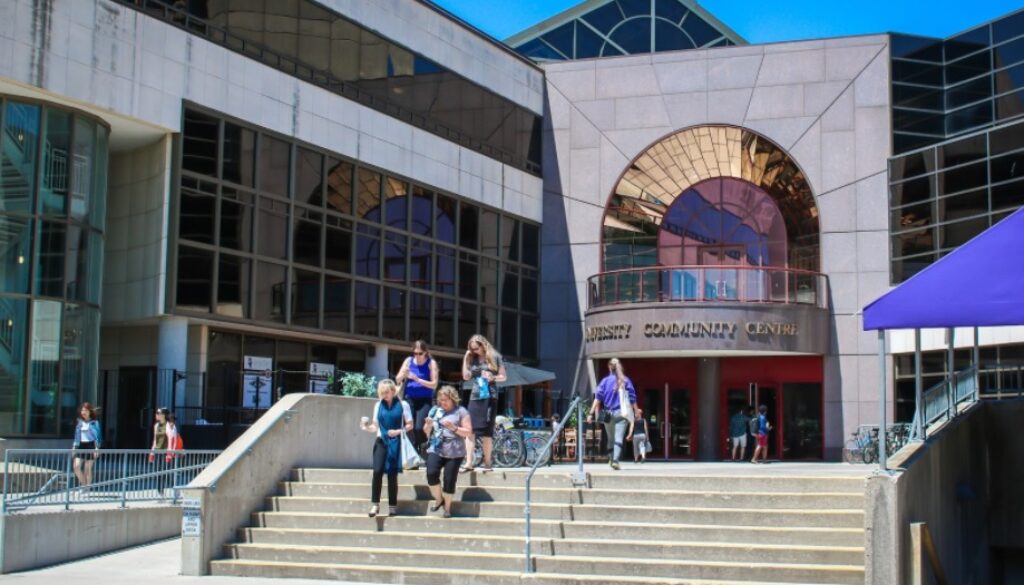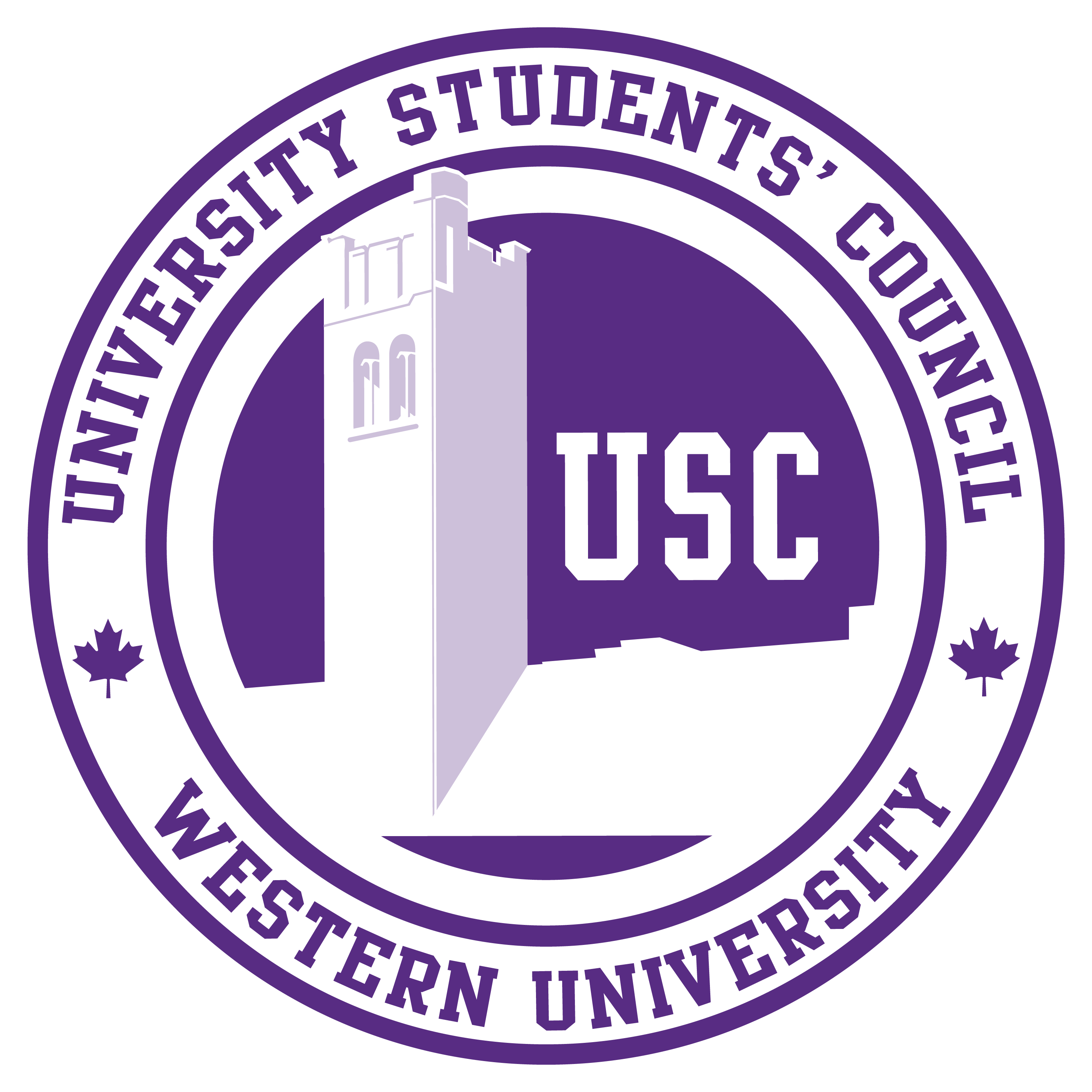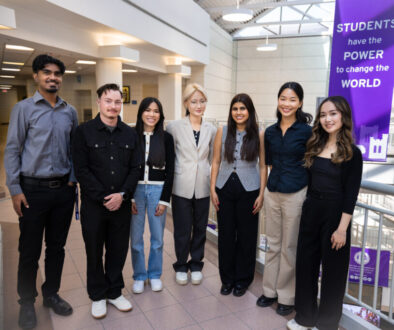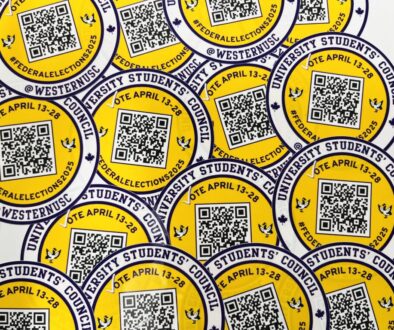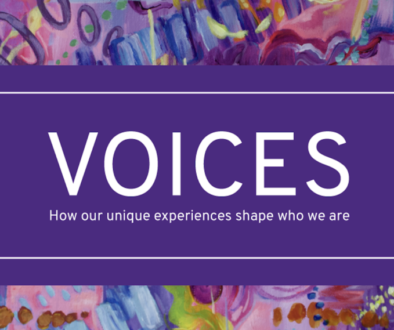USC Submission for Western University’s 2022-2023 Budget
Dear Dr. Prichard, Mrs. Logan and Mr. Chelladurai,
On behalf of the University Students’ Council at Western University and the 35,000 undergraduate and professional students we represent, we write to share our thoughts on the priorities for next year’s university budget.
The USC was pleased to see that the 2021/2022 budget included investments in EDI, Sustainability and Student Financial Aid. We firmly believe that the university’s work in these areas should continue, and would like to see the university build on advancing student-facing priorities by considering further investments in Racial Equity, Gender Equity, Sustainability, and Work-Integrated Learning.
In the 2022/2023 budget, we urge you to address challenges that have been consistently identified as important to the student body: the distribution of free menstrual products on campus, investments in anti-racist equity, diversity and inclusion work, the development of robust work-integrated learning opportunities, and the prioritization of sustainable initiatives.
We believe these priorities, put forward by students, align with the goals of Western University as outlined in Towards Western at 150: Western University Strategic Plan, where investments in work-integrated learning, creating a more equitable and inclusive Western, advancing sustainable initiatives, and enriching the student experience all feature in the plan.
The USC is committed to the success and wellbeing of the undergraduate and professional population, the creation of new opportunities for our students, and the dismantlement of barriers preventing the leaders of tomorrow from reaching their full potential. We appreciate your leadership and welcome the opportunity to discuss these ideas with you, in the context of the 2022/2023 university budget, at your earliest opportunity.
Sincerely,
Zamir Fakirani, USC President
Ziyana Kotadia, Vice President University Affairs
Priority #1 – Gender Equity: Menstrual Products
In March and April 2019, a pilot project was undertaken by the USC to provide all bathrooms in the UCC with free menstrual products. This pilot project provided these products in male, female, and gender-neutral washrooms and was highly successful, with ample positive feedback received from students. Due to the project’s success and positive reception, the USC would like to see the university build on the success of this student-run pilot project by providing free menstrual products not only all bathrooms within the UCC, but in all washrooms across campus. For the 2022-2023 budget cycle, the USC has the following recommendation:
Recommendation: The University should invest in the provision of free menstrual products to be provided in all washrooms on campus.
This recommendation is in line with a growing trend of educational institutions providing free menstrual products for students in order to decrease barriers to education that those who need these products may experience. On October 8th, 2021, the Ontario Government announced an initiative to distribute six million sanitary products in school boards across the province annually, which can be accessed by students in washrooms free of change, in order to “build more inclusive schools that empower all girls to have the confidence to succeed”.
Menstrual products are a necessity for a large portion of Western’s population, and students who menstruate, including but not limited to female, non-binary, and transgender students, require access to these products in order to move through daily life. Menstrual health is a basic human need, yet around 500 million girls globally struggle to access adequate menstrual products, and Canadian women spend up to $6,000 in their lifetime on menstrual hygiene products. Not being able to access these products can be a barrier to education because of the financial burden the products provide, and the lack of open access to the products contributes to the unequal burden that those who require them are placed under. Toilet paper is provided free of charge for anyone wishing to use a public restroom – we believe that those who require other sanitary products should also be provided with these free of charge.
63% of Canadian women and girls have reported having to miss “an activity because of their period and concerns about not being able to access menstrual hygiene products or proper facilities”. Locally, period poverty remains prevalent; however, to combat this, the Thames Valley District School Board has placed menstrual products in 26 public high schools in London. London City Council has voted to provide free menstrual products to city-owned facilities. Additionally, all three of Western’s Affiliate Colleges (Huron, Brescia, and King’s University Colleges) already provide free menstrual products in washrooms to their students, and larger universities like University of British Columbia have had free menstrual products available in the majority of washrooms since 2019.
Menstrual products are not a luxury – they are a necessity. Ensuring that menstrual products are free and readily available to students who need them will help create a more equitable environment on campus, and build a culture where menstruators feel empowered to move through spaces on campus with a sense of belonging. Providing these products in university bathrooms of all genders will help reduce the stigma surrounding menstrual products, reinforce the normalization of menstruation, and reduce barriers to education that menstruators experience.
Priority #2 – Racial Equity: Long-Term Plan and Resource Centralization
Though post-secondary education fosters a community for growth, increased capacity for citizen engagement, economic empowerment, and more, there are barriers in place for racialized and religious students to access and thrive in post-secondary settings. Western must ensure a safe and accessible campus community for all students and should prioritize creating an environment that embodies the values of equity, diversity and inclusion.
In July 2021, the USC asked students to share their experiences at Western regarding racial and religious equity in the Religious and Racilaized Students survey. The results of this survey found that 92% of students of colour surveyed agreed that racism is an reoccurring issue on Western’s campus. 50% of students surveyed stated they have observed an act of racism or religious discrimination during their time at Western and 40.67% have experienced racism on campus. These numbers indicate that there is significant work to be done to combat race and religion-based discrimination on campus.
The USC is currently developing a Racialized and Religious Students’ Policy Paper, to be presented at the November 2021 Council meeting for approval and which will outline a full list of recommendations. For the 2022-2023 budget cycle, the USC has the following recommendations:
Recommendation: The University should invest in creating a long term strategic plan to clearly outline equity, diversity, and inclusion priorities and should commit significant financial resources to staffing the office of the AVP EDI so that there is a robust team in place to both develop and execute this long-term strategic plan.
Recommendation: The University should centralize EDI education and support resources and invest in the promotion of these resources to the student body.
While Western has committed to the recommendations produced in the President’s Anti-Racism Working Group Final Report, the university does not currently have a multi-year plan regarding equity, diversity and inclusion on campus. Long-term planning is essential so that the campus community can evaluate the ongoing efforts at a number of levels (administrative, faculty, staff, etc.). Creating a long-term plan also requires establishing milestones and other metrics to understand both the scope of the problem at different points in time, and to track and understand what success looks like in creating a more equitable campus.
McGill University recently created a five year strategic plan regarding Equity, Diversity and Inclusion, which outlines how McGill will work to make tangible change on campus to make students feel safe and comfortable on campus. Additionally, in March 2021, the federal government invested 1.2 million dollars to Ontario Universities to increase equity, diversity and inclusion research. This funding has been put in place to help Universities overcome systemic barriers along with creating more opportunities for career advancement for underrepresented communities. In Towards Western at 150: Western University Strategic Plan, Western indicates an intention to “create and fund an EDI Strategic Plan for Western”. The USC is supportive of this and looks forward to seeing Western act on this intention to better position our university as a safe and inclusive environment for all.
Essential for long-term EDI planning is the collection of equity-based data. Not only does collecting equity-based data allow for a better understanding of the overall student body at Western, but the Ontario Human Rights Commission explains that by collecting equity-based data, it helps to actively identify and verify the barriers and issues faced by the equity-deserving groups. This data helps demonstrate and inform advocacy efforts, increased funding initiatives and can help influence the support of key stakeholders. While Western is currently undertaking an Equity Census on campus, it is the analysis of that data and the resultant planning that will be foundational to the future of equity on campus. Western should commit significant financial resources to hiring a robust team to carry out this work and establish a plan for the collection of equity-based data beyond the 2021/2022 academic year.
The USC Religious & Racialized Students Survey Report found that 38.9% of the students surveyed did not seek support after experiencing racism or religious discrimination at Western. Students described the experience of seeking help at Western as “performative, non-existent, anxiety-inducing, terrifying, stressful, exhausting” and more. Additionally, students reported that there is a lack of follow-up and that 29.2% of students surveyed “did not think it would make a difference to report”. Others indicate the process to reporting is confusing, and 16.7% of students surveyed did not know where to go or how to report discrimination on campus. Students report feeling as though there is a gap between racialized and religious student groups on campus and the available student supports, and many students are still unaware of the resources available at Western. Many students explained that if the tools were promoted, better reflected the needs of racialized and religious students, and were made more accessible for students, they would be more likely to seek support.
Western should prioritize the creation of a centralized EDI resource page for students to access, both on their website and on OWL, that contains a list of tools and resources available and how to access them. This should include an instructional guide of how to report discrimination on campus and any specific supports, both on and off campus, available for students. Additionally, this OWL page could provide an outlet for students to share events that connect students to resources and student groups. By providing a collection of resources and support on the main website that students access on a daily basis, students will be more aware of resources and be able to better access resources.
Advancing anti-racist action and supporting equity-deserving groups on campus is vital. Commitment to this work requires a long-term plan to articulate clear goals and milestones, as well as an active effort to promote and make accessible EDI resources.
Priority #3 – Work Integrated Learning: WIL Framework
Experiential learning opportunities, including work integrated learning, is a consistent priority for students at Western. From consultation with students, the USC has developed a number of principles and recommendations that guide our advocacy. A foundational principle of this advocacy is that work integrated learning opportunities should be available to all students, and that students should be able to articulate the value of those experiences in ways that further their employability. For a more detailed understanding of the USC’s position on experiential learning, please see the University Students’ Council Standing Policy: Experiential Learning Policy Paper. For the 2022-2023 budget cycle, the USC has the following recommendation:
The University should invest in creating a framework for Work Integrated Learning (WIL) that clearly defines success and addresses barriers to student participation in WIL opportunities, and allocated resources to implement that framework.
WIL, and experiential learning more broadly, are a clear priority for Western students and administration. Western has chosen to emphasize the weighting of this particular area in the third iteration of the provincial strategic mandate agreement (SMA3), set to influence institutional funding in the coming years, and in the new strategic plan. To reflect this prioritization, the USC supports the allocation of funds to develop a comprehensive framework that creates a shared definition of success in work integrated learning, and experiential learning more broadly, so that students and employers know what to expect of and can better articulate the value of a Western degree. Such a framework can also be used to demonstrate that resources being directed toward WIL programming are being effectively utilized for meeting institutional, employer, and student goals by making sure those goals are clearly defined and use a common language.
For example, the Business Council of Canada surveyed Canada’s 95 largest companies in 2018 and identified that when evaluating and hiring candidates, the top five skills that employers look for in entry-level hires are collaboration, communication skills, problem-solving skills, analytical capabilities, and resiliency. There is a strong case that these kinds of soft skills are best developed in a WIL environment where students can develop both soft and technical skills, making themselves more employable in the future. However, without a common framework in place, it is difficult to know how well Western’s WIL opportunities are developing these skills in students, or even if these skills are considered metrics for success for Western’s WIL programming.
While EL opportunities are beneficial to those students who are able to participate, there are barriers to accessibility that disproportionately affect certain groups of students. Because students are hired through a partner company’s hiring process, there is a risk of systemic racism and unconscious bias that could result in discrimination against BIPOC applicants. The standards of professionalism that are used to judge an applicant in an interview setting are deeply connected to white supremacy. This includes expectations of white-coded behaviours and attitudes; standards of hair, clothing and communication patterns; and overall expectations vaguely described as “fit.” Beyond that, unconscious bias in hiring wherein the hiring manager will hire the candidate that looks and/or acts the most like themself is not uncommon. Since BIPOC students face specific recruiting challenges that other students do not, any framework for assessing and developing WIL opportunities must address barriers BIPOC students face.
Racism is not the only barrier students face in securing participation in a work integrated learning opportunity. For many students, financial need is a barrier to participation in WIL opportunities. Out of 332 respondents, 66.6% of students indicated that they rely on summer earnings to pay for post-secondary education, which means that these students cannot afford to take part in unpaid opportunities. At Western, students have been raising concerns about the lack of paid internships, co-ops, and practicums available, and a truly comprehensive framework should set clear goals for the proportion of paid opportunities available to students and include metrics focused on increasing these opportunities year over year.
Work Integrated Learning is such an important component of a Western education. Investing in its success means first understanding what success looks like. Developing this understanding across the campus community will require consultation and collaboration, with the aim of creating a comprehensive framework that includes metrics that address reducing barriers to students. The USC looks forward to being active participants in such a consultation process.
Priority #4 – Sustainability: Green Revolving Fund and Green Roofs
Sustainability at Western and in the broader community is a vital concern for students. The health of the planet will have a profound impact on the lives of current and future students, both in shaping the opportunities available to them and in determining the quality of life for all of us. The USC is currently developing a Sustainability Policy Paper, to be presented at the November 2021 Council meeting for approval. For the 2022-2023 budget cycle, the USC has the following recommendations:
Recommendation: The University should create a Green Revolving Fund to provide funding for projects focused on sustainability, tied to deferred maintenance planning.
Recommendation: The University should invest in green roofs on campus, creating a plan to retrofit existing structures and mandating that future builds include a green roof.
Towards Western at 150: Western University Strategic Plan identifies sustainability as a key element of Western’s way forward in the world. The USC fully supports this position, and is excited to see its inclusion in the strategic plan. Creating a Green Revolving Fund is one important and innovative way to support increased biodiversity, protect species on campus, and support sustainability in new builds and in managing deferred maintenance on campus. When rethinking campus diversity and improving waste water management, green roofs can have a significant impact. These roofs can also reduce the carbon footprint of university buildings by reducing the need for heating and cooling where green roofs are employed.
Green Revolving Funds are a tool for investing in energy saving infrastructure. After the initial fund is established, units can apply with specific projects in mind that will support sustainability by reducing energy use, maintenance, or otherwise support sustainability on campus. The savings resulting from these projects are then reinvested in the fund itself over a set period of time, either as budget transfers or by other means. This approach to funding sustainability on campus helps make it clear that investments in sustainability aren’t just expenses by forcing units to track the return on investment for these projects.
If tied to deferred maintenance, these funds can really embed sustainability as a key consideration in all of the physical spaces on campus, and can help promote a shift in university culture that treats sustainability as an ongoing initiative rather than a series of one offs. In the 2021-2022 Operating and Capital Budget, deferred maintenance for non-residential buildings is listed at $261 million, with an additional $43 million for residences (combined), creating significant pressure on the Facilities and Maintenance Division. A Green Revolving Fund could provide a new source of funding for some of these expenses, while tying the work more concretely to the vision for campus sustainability outlined in the Strategic Plan.
Green roofs are an excellent example of something that could be funded through a Green Revolving Fund, and an important investment even without such a fund. There are a number of economic benefits to green roofs: a University of Michigan study that looked at a range of benefits, including stormwater management, health via reduced pollution, and energy savings found that over a 40 year lifespan, the green roof would save approximately $200,000, depending on design of the roof, the geographic location of the building, and the design of the building itself. These savings are realized where green roofs help reduce amount of water flowing into stormwater management systems, which can help reduce flooding and erosion; where they insulate the building, including noise reduction from mechanical things on roof and improve energy efficiency; and, where they reduce the urban heat island effect and improve air quality. Beyond building-specific savings, green roofs have a role to play in increasing biodiversity on campus and introducing additional habitat space. An increase in plants on campus also has the effect of reducing greenhouse gas emissions as plants increase oxygen production and reduce CO2 emissions through photosynthesis, and by making high-emission HVAC systems more efficient.
Students are passionate about the sustainability of this campus and the future of our planet, and want to see serious investment in areas that will reduce the carbon footprint of our campus. A Green Revolving Fund offers a sustainable funding model with which to tackle sustainability, while adding green roofs across campus offers physical mitigation efforts while promoting savings. These efforts would give greater visibility to the work Western does in the realm of sustainability, while at the same time driving forward the high level goals outlined in the new strategic plan.

